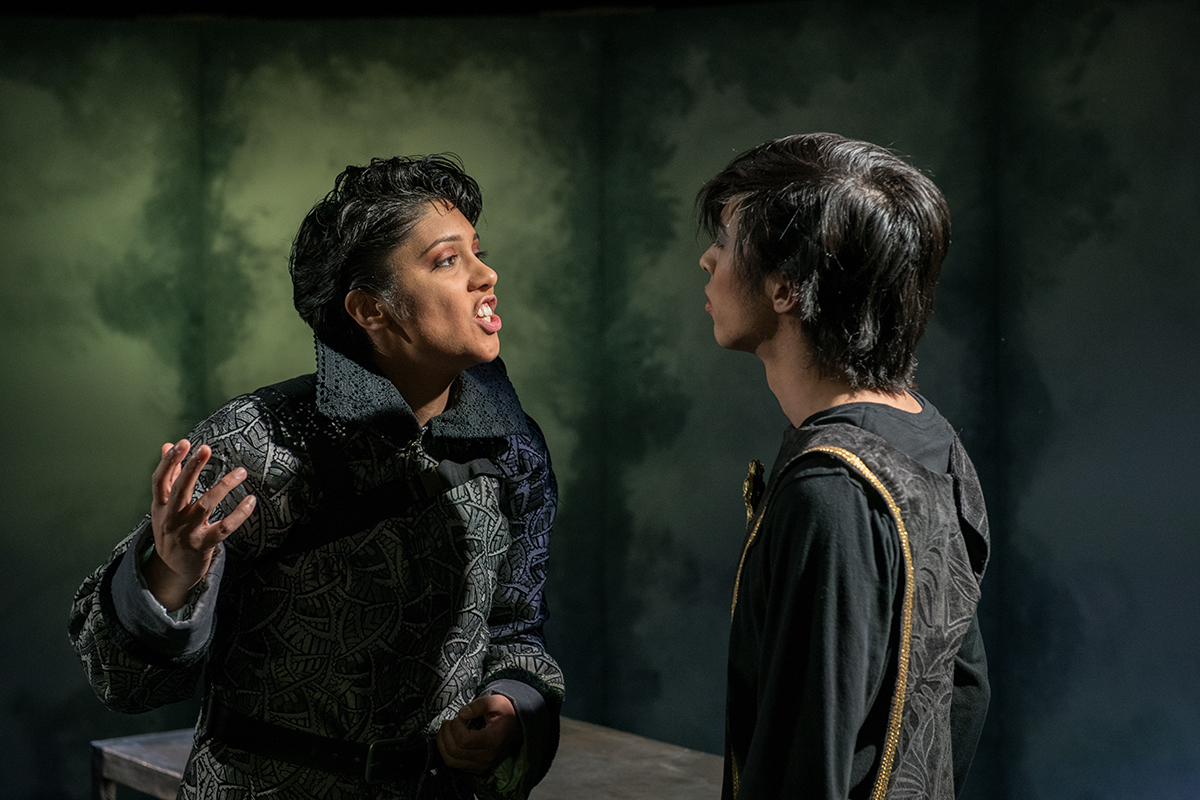You may have seen the posters around campus, advertising the production of William Shakespeare’s Richard III, accompanied by a tasteful smattering of blood. You may have wondered, why this play? For most of us, when we think Shakespeare, we think of titles like Hamlet and Romeo & Juliet. The historical plays tend to fall more by the wayside of cultural awareness than Shakespeare’s more widely-known plays. So why Richard III?
I sat down with Anna Griffith, adaptor and director of the production, and asked her this exact question. To paraphrase Griffith’s response, this play is particularly timely. The story follows Richard III, the Duke of Gloucester, as he manipulates his way to the throne of England, stabbing most of his family in the back — both literally and otherwise, but mostly literally — as he goes. Griffith commented on the ongoing relevance of such a play in today’s political climate: “Anytime there is an opportunist dictator in power, this play becomes timely.”
Richard is cunning, ambitious, and willing to manipulate and sacrifice anyone in order to get what he wants. As is stated by Griffith in the helpful insert in the program that each audience member receives, “One reason this play resonates so strongly today is that it allows us to see the ways power operates.” Not only is Richard able to manipulate his fellow nobility to raise himself to the throne, but those who stand by are equally implicated. While guilt lies with the hand that raises the sword, an equal share lies with those who allow the hand to be raised.
Certainly the themes of manipulation and abuse of power are well-communicated in this performance. Richard opens the play by speaking directly to the audience, making it unavoidably clear that his intentions are treachery by claiming that since he is unlikely to be well-loved by the kingdom, he is instead “determined to prove a villain.”
The relationship between the character of Richard and the audience is very interactive, and Makailla Palliyaguru plays the role in such a way that the viewer feels privy to Richard’s plans. Throughout the play, Richard manipulates nearly every other character, and the way this company portrays this kind of control is extremely effective. Richard is a charmer, physically and intellectually intimidating anyone who stands in his way. Palliyaguru slides into the physical space of Richard’s enemies and treats them like friends, but what might look like an amicable hand clapped on a shoulder doubles as a threat, more likely to strangle than to strengthen.
Richard III is a production more typically performed on a grand stage, which raises questions about staging the play in a small black box theatre. Griffith’s adaptation of the play cuts down on the number of actors, of which there are only eight in this production, performing a total of 20 characters. According to Griffith, “The smaller space actually fits the production of this play really well.” For eight actors to play 20 characters, costuming must be quick and easy to change, and the smaller space is better for backstage movement, allowing actors to hit their marks quickly.
As I have mentioned, Richard is intimate with the audience, and a small stage — as well as a small audience — helps to emphasize this relationship; nearly every time Richard is alone onstage, even for only a few seconds, Palliyaguru exchanges a knowing smirk with the audience, reminding us that to Richard, the whole murderous affair is nothing but a game.
One recurring motif that this production utilizes is the display of the dead bodies, presented as nondescript human figures wrapped in white sheets and hanging from the ceiling; every one of Richard’s murders are present and watching as he plots the next. In the moment that the body of King Edward IV is suspended from the rafters, Palliyaguru takes a moment to bow mockingly to it; as much as the viewer knows that what Richard is doing is abominable, we find ourselves laughing at his treatment of such acts because in a way, Richard has charmed us as easily as any of his victims. What better way to portray this relationship between character and audience than by putting both in a small, intimate space?
On a thematic level, this play is relevant to our current political climate, and on a practical level, such a production not only lends itself to a smaller space but encourages the pushing of the space’s limits. While Griffith has adapted the play, this production is not modernized, proving that the story can resonate even when presented in such “alienating” language as Shakespearean English. The story of Richard III transcends the Shakespearean stage, as relevant today in a black box theatre in Abbotsford as it was when the Bard first penned it for the London stage.
Image: UFV Flicr


